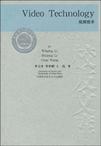视频技术
2009-6
中国科学技术大学出版社
李卫平,李世鹏,王纯 著
153
无
大学最重要的功能是向社会输送人才.大学对于一个国家、民族乃至世界的重要性和贡献度,很大程度上是通过毕业生在社会各领域所取得的成就来体现的. 中国科学技术大学建校只有短短的50年,之所以迅速成为享有较高国际声誉的著名大学之一,主要就是因为她培养出了一大批德才兼备的优秀毕业生.他们志向高远、基础扎实、综合素质高、创新能力强,在国内外科技、经济、教育等领域做出了杰出的贡献,为中国科大赢得了“科技英才的摇篮”的美誉. 2008年9月,胡锦涛总书记为中国科大建校五十周年发来贺信,信中称赞说:半个世纪以来,中国科学技术大学依托中国科学院,按照全院办校、所系结合的方针,弘扬红专并进、理实交融的校风,努力推进教学和科研工作的改革创新,为党和国家培养了一大批科技人才,取得了一系列具有世界先进水平的原创性科技成果,为推动我国科教事业发展和社会主义现代化建设做出了重要贡献. 据统计,中国科大迄今已毕业的5万人中,已有42人当选中国科学院和中国工程院院士,是同期(自1963年以来)毕业生中当选院士数最多的高校之一.其中,本科毕业生中平均每1,000人就产生1名院士和。700多名硕士、博士,比例位居全国高校之首.还有众多的中青年才俊成为我国科技、企业、教育等领域的领军人物和骨干.在历年评选的“中国青年五四奖章”获得者中,作为科技界、科技创新型企业界青年才俊代表,科大毕业生已连续多年榜上有名,获奖总人数位居全国高校前列.鲜为人知的是,有数千名优秀毕业生踏上国防战线,为科技强军做出了重要贡献,涌现出20多名科技将军和一大批国防科技中坚.
本书阐述视频技术中的基本概念和关键技术。除了回顾视频技术的背景和历史外,重点介绍视频编码和通信的基本原理和方法,并对相关的标准、应用系统、及未来的研究方向予以讨论。全书共分八部分,依次为引言、早期的视频技术、模拟视频信号、数字视频信号、视频编码、视频编码标准、视频应用、以及对未来的展望。本书可作为信息科学技术领域高年级本科生和研究生针对视频领域的入门教材,也可以供从事该领域科研和技术开发的人员参考。
Preface to the USTC Alumni's SeriesPreface1 Introduction2 Early Days of Video Technology3 Analog Video 3.1 Difference between Video and Film 3.2 Interlaced Scanning4 Digitized Video 4.1 Video Sampling 4.2 Pixel Quantization 4.3 Color Sub-sampling5 Video Coding 5.1 Basic Principles 5.2 Three Stage Model 5.3 Signal Processing for Compression 5.3.1 Prediction 5.3.2 Motion Compensated Prediction 5.3.3 Linear Transforms 5.3.4 Motion Compensated Transformations 5.4 Quantization 5.4.1 Scalar Quantization 5.4.2 Vector Quantization 5.5 Entropy Coding 5.5.1 Huffman Coding 5.5.2 Arithmetic Coding 5.5.3 Lempel-Ziv Coding 5.6 Predictive Coding with Quantization 5.7 Symbol Formation 5 7 1 Run-Length Coding (RLC) 5.7.2 Zigzag Scanning 5.7.3 Zerotree Coding 5.7.4 Context Formation 5.8 Bit Allocation and Rate Control 5.9 Pre-processing and Post-processing 5.10 Fractal Compression 5.11 Scalable Video Coding 5.12 Transcoding 5.13 Object Based Video Coding 5.14 Model-Based Coding 5.15 Hybrid Natural and Synthetic Coding 5.16 Error Resilient Video Coding6 Video Coding Standards 6.1 H.261 6.2 H.263 6.3 MPEG- 1 6.4 MPEG-2/H.262 6.5 MPEG-4 Part 2 6.6 H. 264/MPEG - 4 Part 10/AVC 6.7 AVS 6.8 H. 264/MPEG4 - AVC SCALABLE EXTENSION 6.8.1 Hierarchical Coding Structure and Temporal Scalability 6 8 2 Spatial Scalability 6 8 3 SNR Scalability7 Applications 7.1 Good Old Analog Television 7.2 Video Tape 7.3 Video CD, DVD, HD - DVD, and Blu-ray 7.4 Digital Television 7.5 Video over IP 7.5.1 Technical Challenges and Possible Solutions 7.5.2 Bring Old Applications to New Level8 Look into Future 8.1 New Types of Video Contents 8.2 New Video Coding Trends 8.3 Video Delivery 8.4 Mobile Media 8.5 Video Content Analysis and Search 8.6 Internet Video -- Media 2.0 8.6.1 Democratized media life cycle 8.6.2 Data-driven media value chain 8.6.3 Decoupled media system 8.6.4 Decomposed media contents 8.6.5 Decentralized media business model 8.7 Going Back to BasicsReferences
The prediction or transformation techniques discussed so far all aim atde-correlating highly correlated neighboring signal samples. They areespecially effective for spatial neighbors within video frames. Video is a setof temporal samples that capture a moving scene across time. In a typicalscene, there is a great deal of similarity or correlation between neighboringframes of the same sequence. However, directly extending the above de-correlating techniques to the temporal direction would not always be veryeffective. The direct temporal neighboring samples that are spatiallycollocated are not necessarily highly correlated because of the motion in thevideo sequence. Rather, the pixels in neighboring frames that are morecorrelated are along the motion trajectory or optical flow and there usuallyexists a spatial displacement between them. Therefore, an efficient signaldecorrelation scheme in temporal direction should always operate on pixelsalong the same motion trajectory. Such a spatial displacement of visualobjects (pixels, blocks, or objects) are called motion vector and the processof determining how objects move from one frame to another or finding themotion vector is called motion estimation. The operation of de-correlatingsamples in different frames using motion information is called motioncompensation.The concept of motion estimation and compensation isillustrated in Figure 11.

无
边看专业知识边学英语,一箭双雕,估计等这本看完了专业英语水平可是上了一个新台阶呀。